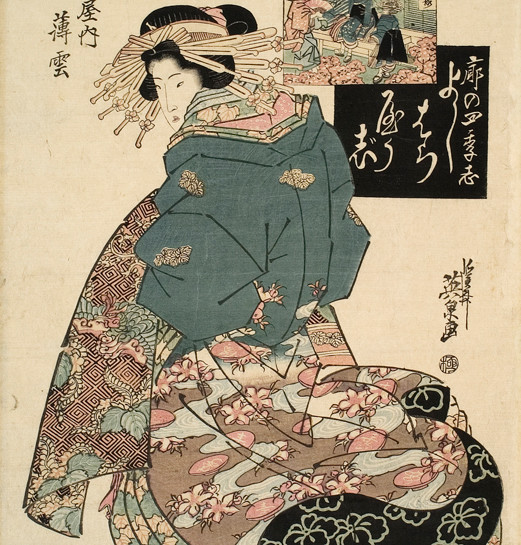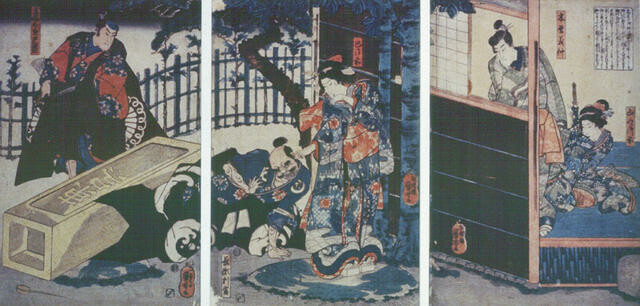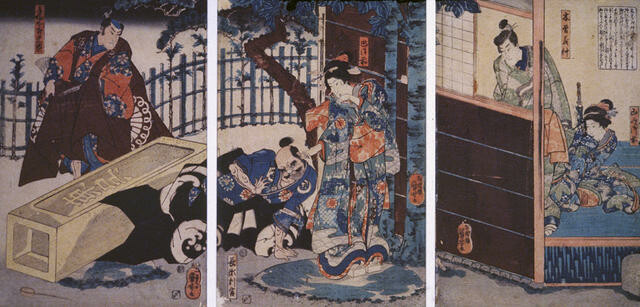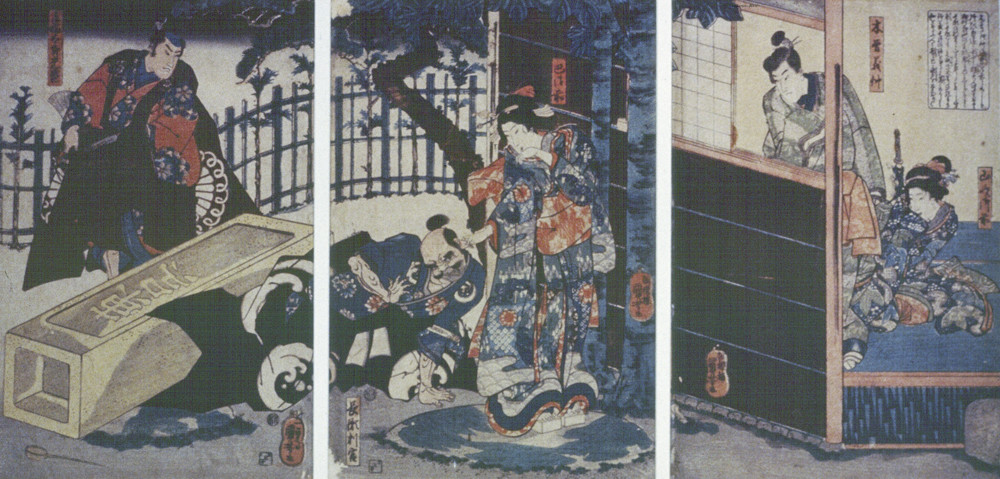Utagawa Kuniyoshi
Japan, b.1798, d.1861
Tomoe Gozen pulling the ear of Nagase Hangan in the presence of Tezuka Taro Mitsumori, Kiso Yoshinaka and Yamabuki Gozen
- c. 1843
- Woodcut
- Purchased, 1953
- 364 x 250mm
- 69/544:1-3
Tags: buildings (structures), fences, people (agents), triptychs, warriors, words
Exhibition History
Ape To Zip: Adventures in Alphabet Art, 13 May 2005 – 8 October 2006
In the exhibition Ape to Zip this work was used for the letter O and was displayed with the following label:
OUCH! These woodblock prints show a painful scene from a kabuki play based on The Tale of the Heike, a famous book about Japanese clans who were fighting each other a long time ago. The ear puller is Tomoe Gozen, a 12th century female samurai warrior who was known for her great beauty and extraordinary strength.
2003 label
This print by the traditional Japanese printmaker, features an incident from the Kabuki theatre which has been an established tradition in Japan for centuries. The actors perform with song and dance using exaggerated expressions and gestures as they act the characters from Japanese legends.
Utatagawa Kuniyoshi did much of his art work for the stage and his fame originated from historical triptychs and figure studies such as this. He was considered one of the most popular ukiyo-e artists of his time. This was a category of Japanese art which focused on subjects of town life and thus included the theatre. It emerged in the late 17th century and by the time of Kuniyoshi it had reached its maturity. There was great competition among the artists for patronage.
Kuniyoshi was one of the first artists to amalgamate both Japanese and western ideas into his prints, experimenting with western perspective and attempting to make his figures more immediate and realistic. His scenes are imbued with wit and irony. This is a triptych, a term used for a work of art in three pieces, and was one of the first works puchased for the Gallery's collection.




